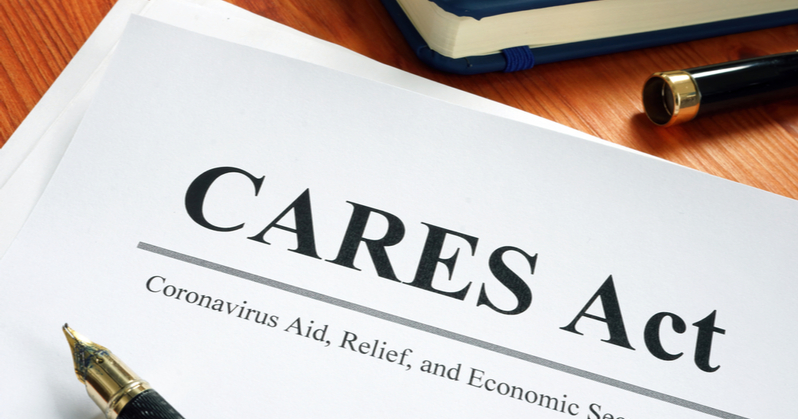Did you take advantage of emergency COVID-19 relief measures in 2020 under the CARES Act, FFCRA, and/or executive orders? If so, you may have another thing coming: the “strings attached” part. Maybe you forgot about it. Or you are not clear about it.
But in 2021, you need to know your responsibilities when it comes to reporting aid and making payments. Read on to learn what the CARES Act, FFCRA, and executive orders mean for your business.
CARES Act, FFCRA, and executive orders rundown
For businesses suffering from COVID-19’s economic impact, the government relief measures were a blessing. But you were trying to manage your business, comply with health and safety regulations, and figure out the intricacies of these laws.
So, you may not know them like the back of your hand. And that is okay. Here is a brief rundown...
The CARES Act, which stands for Coronavirus Aid, Relief, and Economic Security Act, established several relief measures for business. If you took out a Paycheck Protection Program (PPP) loan, claimed the Employee Retention Tax Credit (ERTC), or deferred your employer Social Security tax, you can thank the CARES Act.
The FFCRA, which stands for Families First Coronavirus Response Act, established emergency paid sick and family leave and the corresponding tax credits.
Finally, the 2020 executive orders established the employee Social Security tax deferral.
What do these relief measures mean for you in 2021?
You and your employees have enjoyed the much-needed benefits of the Social Security deferral, PPP loan or ERTC, and FFCRA paid leave. Now, it’s time to get your ducks in a row in the new year.
So, what do the CARES Act, FFCRA, and executive orders mean for your business in 2021?
- Deferral payback: Starting in March 2020, you had the opportunity to defer the employer share of Social Security tax. And beginning in September 2020, you could do the same for the employee share of Social Security tax for eligible employees. Unfortunately, this was just a deferral. Think of it as an interest-free loan you and your employees could take out to give you more cash during a tough economic time.
You must pay back all the deferred employee Social Security tax in 2021. And you need to pay back half of the deferred employer Social Security tax in 2021.
Deferred employee Social Security tax: If you deferred an employee’s Social Security tax, the payback period is between January 1, 2021 and December 31, 2021. As an employer, you must do a ratable collection during this period. That means you will be collecting a little bit of the deferred tax from the employee’s wages each pay period (spread out among the payback period).
Deferred employer Social Security tax: If you deferred your employer Social Security tax obligation, you must pay 50 percent of it by December 31, 2021. The remaining amount is due by December 31, 2022.
Your 2021 deadlines:
- December 31, 2021: Collect and pay all deferred employee Social Security tax
- December 31, 2021: Pay 50 percent of deferred employer Social Security tax
- PPP forgiveness application
If you took out a Paycheck Protection Program loan in 2020, you need to apply to get your loan forgiven.
But between the confusing forgiveness application process and the promise of Congressional aid to simplify the process, many business owners have not applied yet.
And if you have not, 2021 is your year to apply for PPP loan forgiveness. The Small Business Administration (SBA) released Forms 3508 for borrowers to apply. But you can consult your lender on your exact process.
There are a few versions of Form 3508. The form borrowers use depends on how much you borrowed and whether you reduced employee salaries and head count.
- Form W-2 reporting
If you paid sick and/or family leave to an employee, deferred their Social Security tax, or both, you need to report it on that employee’s Form W-2.
Paid leave: If you gave an employee paid sick leave, paid family leave, or both, report the amount(s) in boxes 1, 3, and 5 on Form W-2. And, either report the amount in box 14 (Other) or attach a separate statement that details the amount. The IRS provides descriptions you can use in Notice 2020-54 (e.g., “Sick leave wages subject to the $511 per day limit”).
Deferred employee Social Security tax: Reporting deferred employee Social Security tax is where things can get a little confusing for employers. You need to use both Form W-2 and Form Form W-2c, Corrected Wage and Tax Statement.
Report the employee’s total taxable wages on Form W-2, box 3 and/or box 7. Do not include deferred Social Security tax you did not withhold in box 4.
After you finish withholding the deferred taxes in 2021, report the tax on Form W-2c. Enter “2020” in box c and report the deferred tax you withheld in 2021 and did not report on the 2020 Form W-2 in box 4.
Here is an overview of your Form W-2 reporting responsibilities:
- Report paid sick and/or family leave on W-2
- Report employee total taxable wages on W-2
- Report deferred employee Social Security tax you have collected on W-2c
- Form 941 or 944 reporting
You use either Form 941, Employer’s Quarterly Federal Tax Return, or Form 944, Employer’s Annual Federal Tax Return, to report employee wage and tax information to the IRS.
For tax year 2020, you need to report the following on the fourth-quarter Form 941 or the annual Form 944 in 2021:
- Claimed Employee Retention Tax Credit
- Claimed Paid Family and Medical Leave Credit (sick, family, or both)
- Deferred employee Social Security taxes
- Deferred employer Social Security taxes
On Form 941, report the nonrefundable portion of the Employee Retention Tax Credit on line 11c and the refundable portion on line 13d. Report qualified wages for the ERTC on line 21. If you are using Form 944, report the nonrefundable portion on line 8c and the refundable portion on line 10e, and report qualified wages on line 17.
There are several places to report paid leave on Form 941. Report paid sick leave wages on line 5a(i), your current quarter’s adjustment for sick pay on line 8, and qualified health expenses allocable to paid sick leave on line 19. Report paid family leave wages on line 5a(ii) and qualified health expenses allocable to paid family leave on line 20. Enter your total nonrefundable portion of credit for both sick and family leave wages on line 11b and the refundable portion for both on line 13c. On Form 944, qualified sick leave wages go on line 4a(i), and qualified health expenses allocable to paid sick leave go on line 15. Qualified family leave wages go on line 4a(ii), and qualified health expenses allocable to paid family leave go on line 16. The nonrefundable portion for both goes on line 8b and the refundable portion on line 10d.
Report deferred employee Social Security taxes on lines 13b and 24 on Form 941. If you’re using Form 944, report the deferred employee share on line 10c and report the total deferrals on line 10f and 10h.
Report deferred employer Social Security taxes on line 13b on Form 941. If using Form 944, report the deferred employer share on line 10b and report the total deferrals on line 10f and 10h.
Finally, report deferred Social Security taxes you’ve collected on 2021 Forms 941 or the 2021 annual Form 944.
.png?width=150&height=63&name=TWRlogo-regmark_blueblack%20(1).png)
.png)










Do you have questions about this article? Email us and let us know > info@woodard.com
Comments: